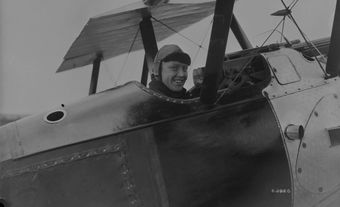National Theatre School of Canada / École nationale de théâtre du Canada
Since it was founded in Montréal in 1960, the National Theatre School of Canada has been one of the most prestigious theatre schools in the country. The school is bilingual, offering separate English-language and French-language programs in acting, directing, playwriting, design and theatre production.The notion of a national theatre school first received focused attention as an indirect result of the so-called Massey Report (the report of the Massey-Levesque Royal Commission on National Development in the Arts, Letters and Sciences) of 1951. Robertson DAVIES, writing the section of the report devoted to theatre, complained that "facilities for advanced training in the arts of the theatre are non-existent in Canada," and that, consequently, "young actors, producers and technicians [...] must leave the country for advanced training, and only rarely return." Notwithstanding widespread acknowledgement of the validity of Davies' complaint, not until 1958-59 was a committee of 16 of the leading members of the Canadian theatrical community formed through the Canadian Theatre Centre / Centre du théâtre canadien (CTC). Actor David GARDNER chaired the committee and director-teacher Michel Saint-Denis was brought in from outside the country to act as senior advisor.
The French-born Saint-Denis had what many regarded as an ideal background to oversee the theatre school project. In the 1920s, he had worked closely with his uncle, the renowned French theatre director Jacques Copeau, to revolutionize theatrical practice and training in France through the Vieux-Colombier troupe. In the 1930s, Saint-Denis had moved to London, England, where he became one of the most highly regarded stage directors of the decade, being responsible for a series of landmark productions featuring such stars of the British stage as John Gielgud, Laurence Olivier and Alec Guinness. He also was involved in founding 2 different theatre schools in that city. The use of Saint-Denis as figurehead for the committee symbolically expressed a central hope for the new Canadian school: that it would embrace that fusion of the best of French and English theatrical training that seemed to be embodied in Saint-Denis himself.
The CTC committee had been formed with a mandate to create a "truly bilingual school, located in Toronto." The committee decided that Montréal, as a more "truly bilingual" city, was a better location and the National Theatre School of Canada / École nationale de théâtre du Canada officially opened on 2 Nov 1960 in premises owned by the Canadian Legion at 1191 Mountain Street in Montréal. The school changed locations several times over the next decade until in 1970 it settled at 5030 rue Saint-Denis. Beginning in 1965, it also rented performing space in the Monument-National, which it purchased outright in 1978. This historic theatre (built 1891-94) was then in a dilapidated state; a major renovation in the early 1990s not only restored the beauty of the old Monument-National but introduced many modernizations, resulting in 2 excellent theatres- the 804-seat Ludger-Duvernay theatre and a smaller flexible Studio theatre, which seats as many as 180 spectators.
In the first year of its operation the National Theatre School offered only classes in acting. In the second year, 1961, a bilingual production program was inaugurated; in 1978 a French program in playwriting was added to the French acting section of the school and in 1980, an equivalent English playwriting program was added to its English acting section. Directing has been the most changeable program at the school. Beginning in the early 1980s, various attempts were made to create programs in English and French for the instruction of directing; but for both financial and pedagogical reasons, these programs have not always succeeded, and the English and French sections of the school have apparently abandoned the pursuit of synchronized objectives in this area. Indeed, while the integration of anglophone and francophone students has been fairly thorough in the production program, in other programs it has been more usual to see the English and French sections of the school operating autonomously.
While the history of the National Theatre School has generally involved a quiet, steady growth of prestige, the institution has not been without controversy. For example in 1968, which was dubbed "the year of the barricades" because of the many student protests that swept across Europe and North America, the National Theatre School experienced its own uprising. The 8 graduating acting students in the French section resigned en masse in protest against the school's disregard of Quebecois playwrights, particularly as exemplified in statements made by the director of the French acting section, André Muller, who was an immigrant from France. As a result of the protest, the school pointedly reversed its anti-Quebecois policy. In 1971, Muller's successor, André Pagé, had the students perform a selection of work from various Quebecois writers and began a program of commissioning work for the school from prominent Quebecois playwrights. In 1998, the 8 students who had resigned were sent a letter from the school declaring that they had been reinstated as alumni and recognizing that their protest had resulted in progressive change in school policy.
The National Theatre School typically graduates between 20 and 30 students a year from its combined programs, and its alumni include many of Canada's foremost theatre artists. Some of its highly recognizable graduates are Colm FEORE, Martha HENRY, Ann-Marie MACDONALD and Sandra OH.

 Share on Facebook
Share on Facebook Share on X
Share on X Share by Email
Share by Email Share on Google Classroom
Share on Google Classroom


